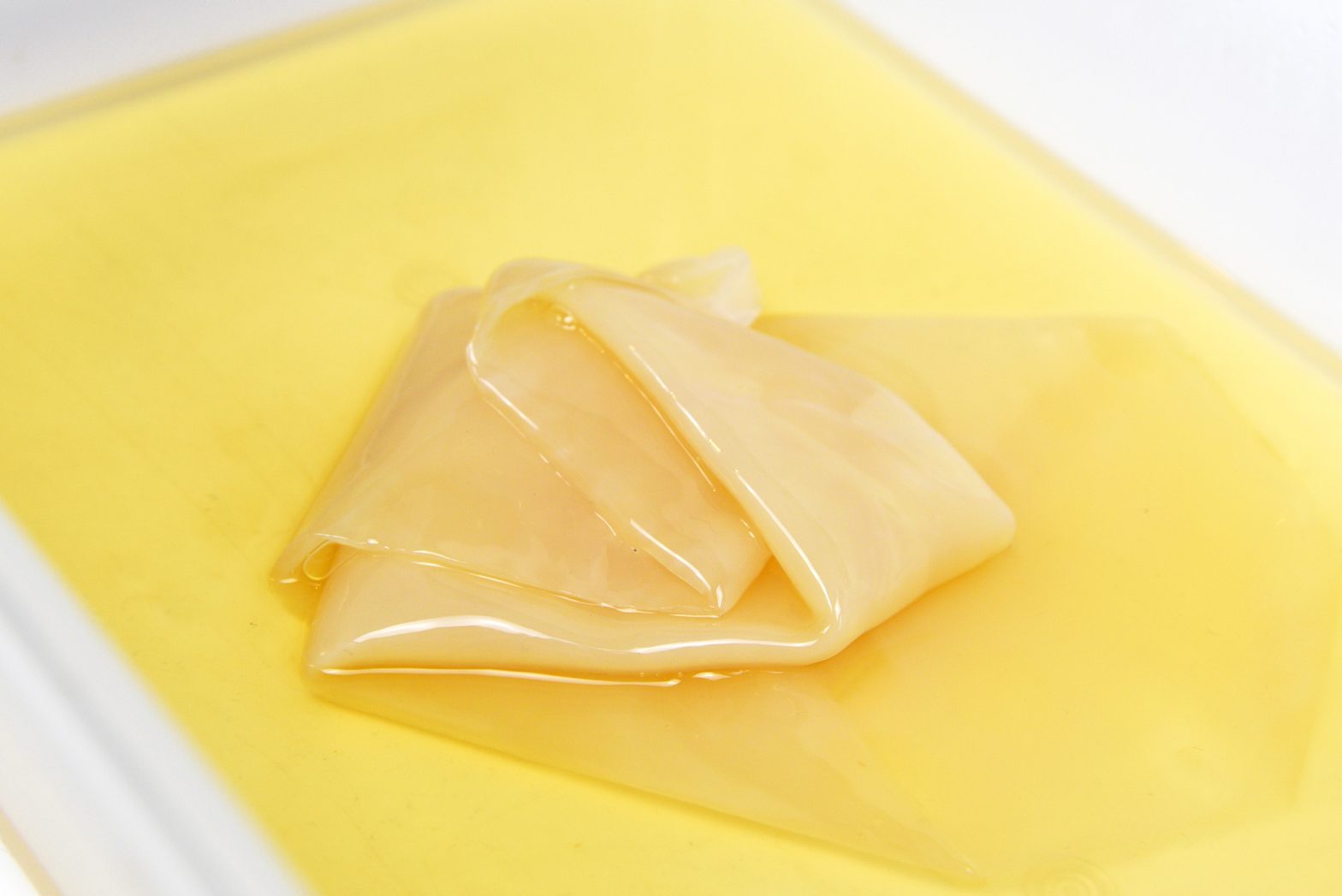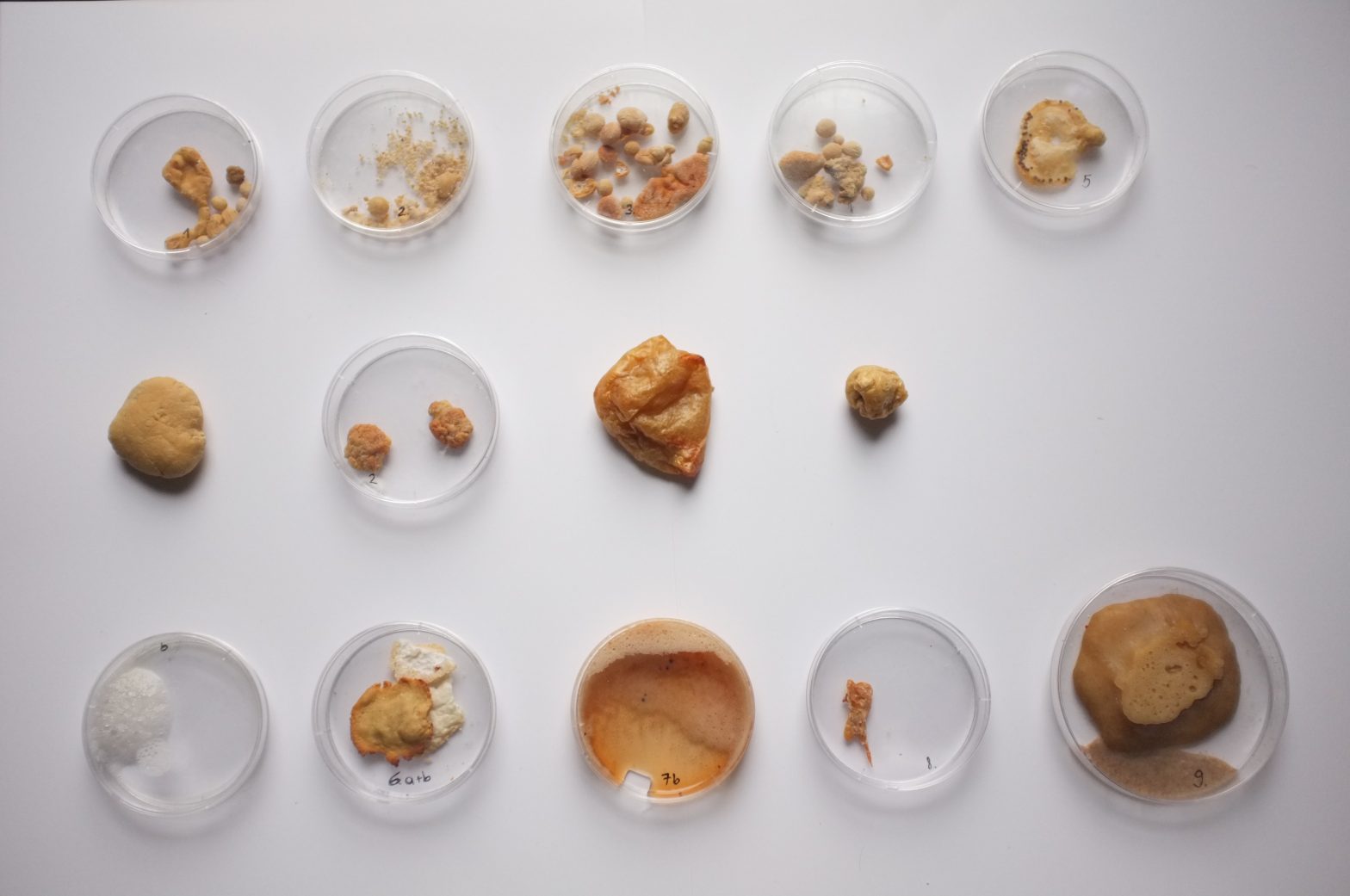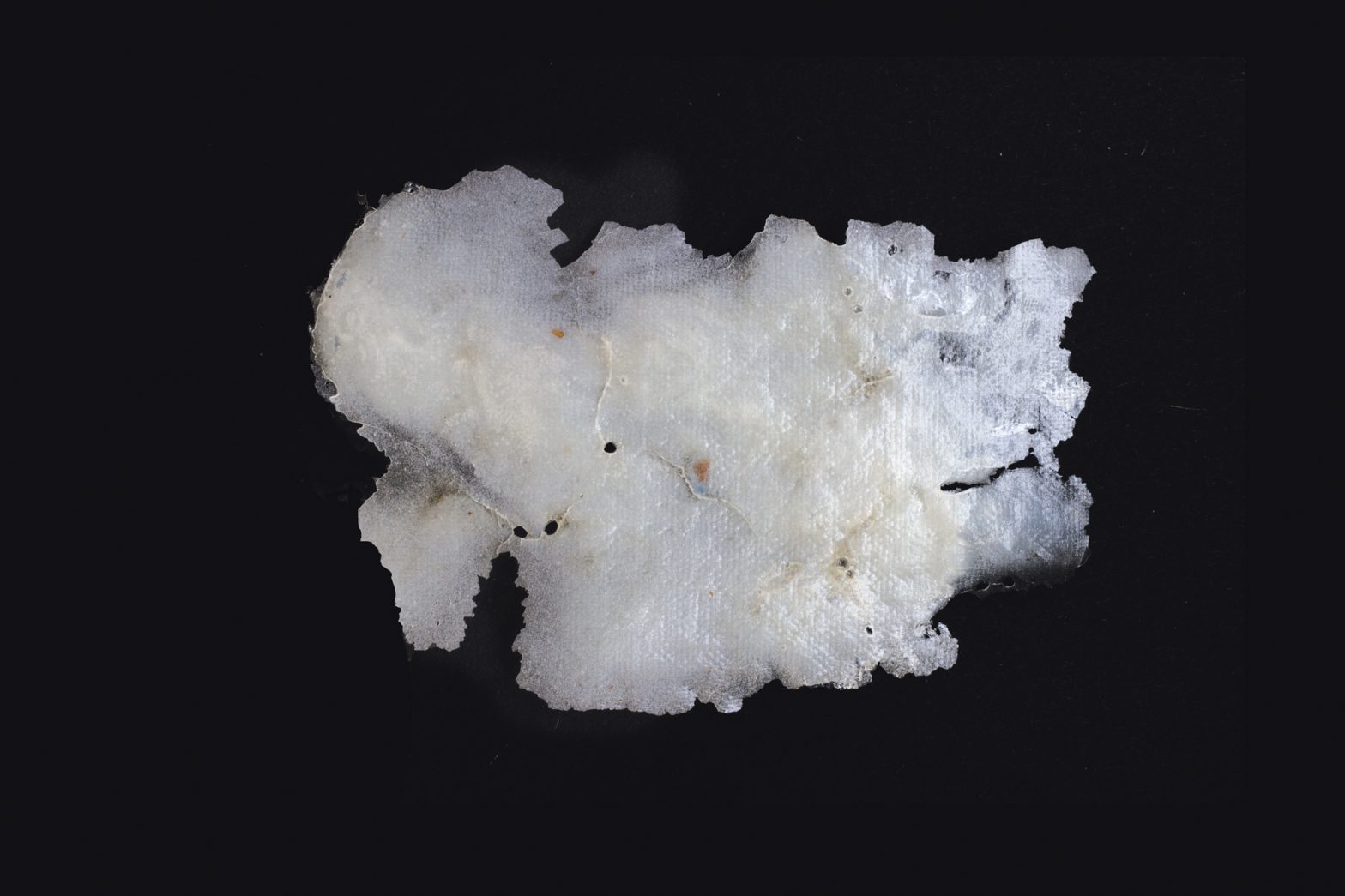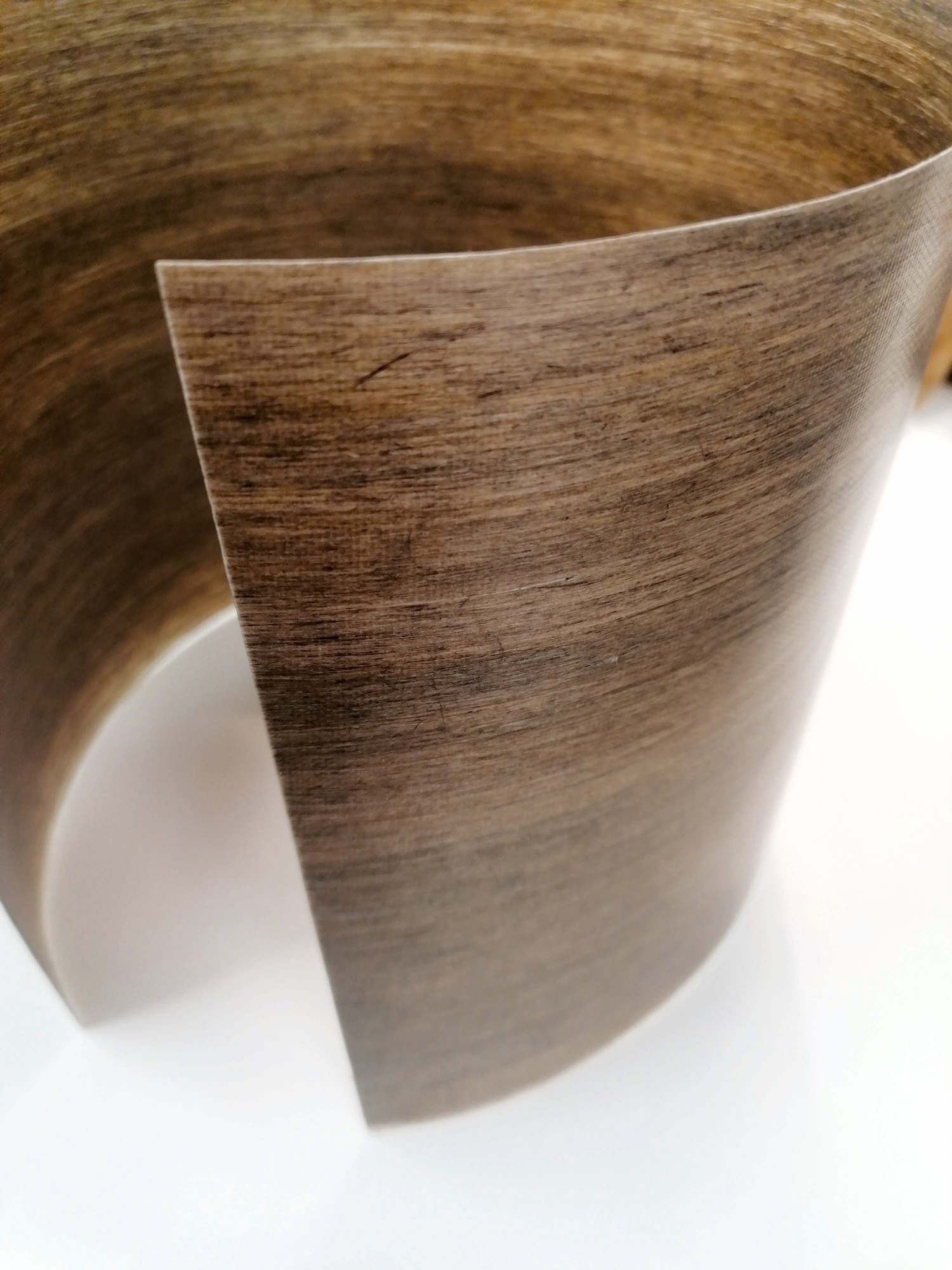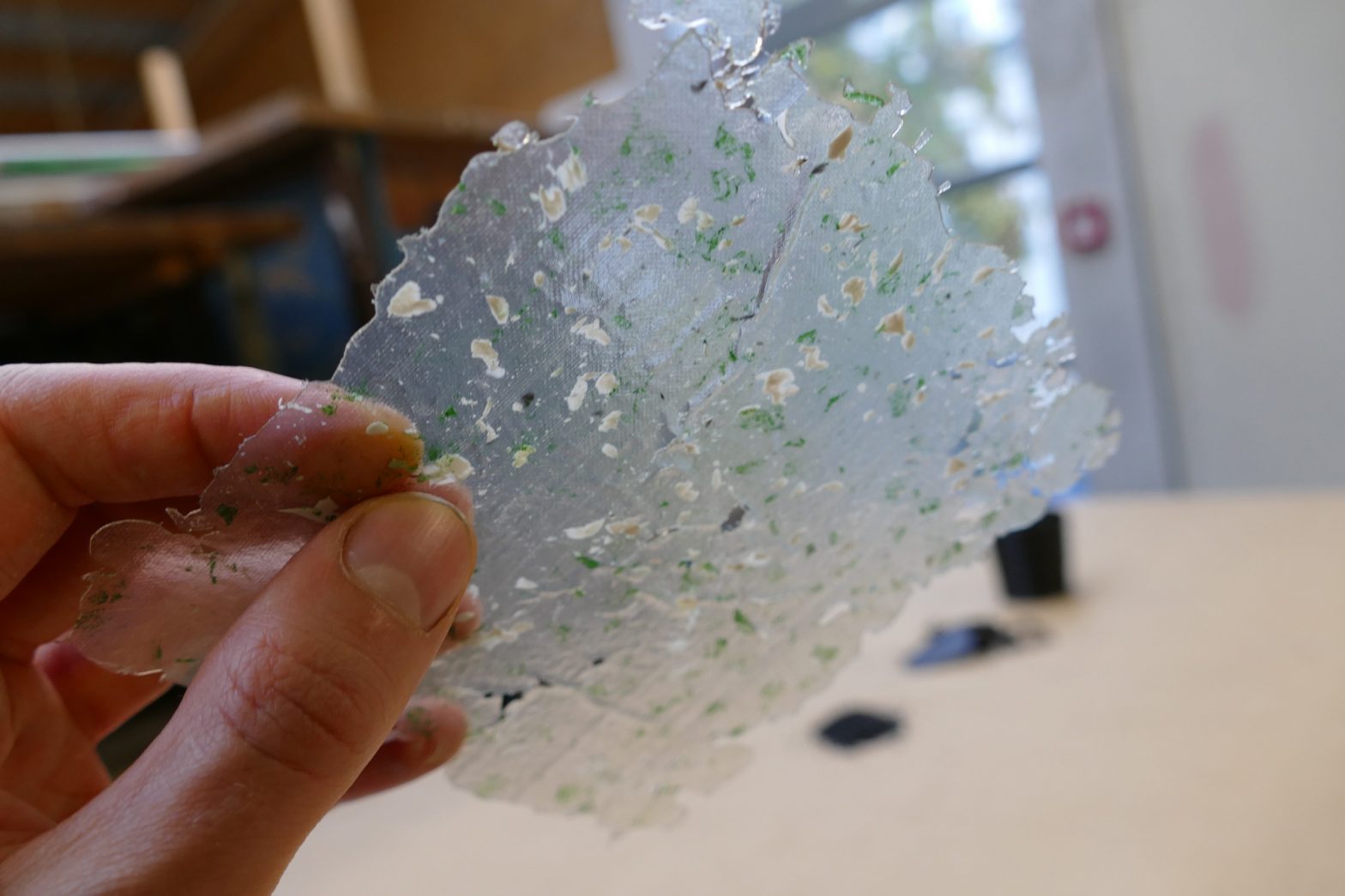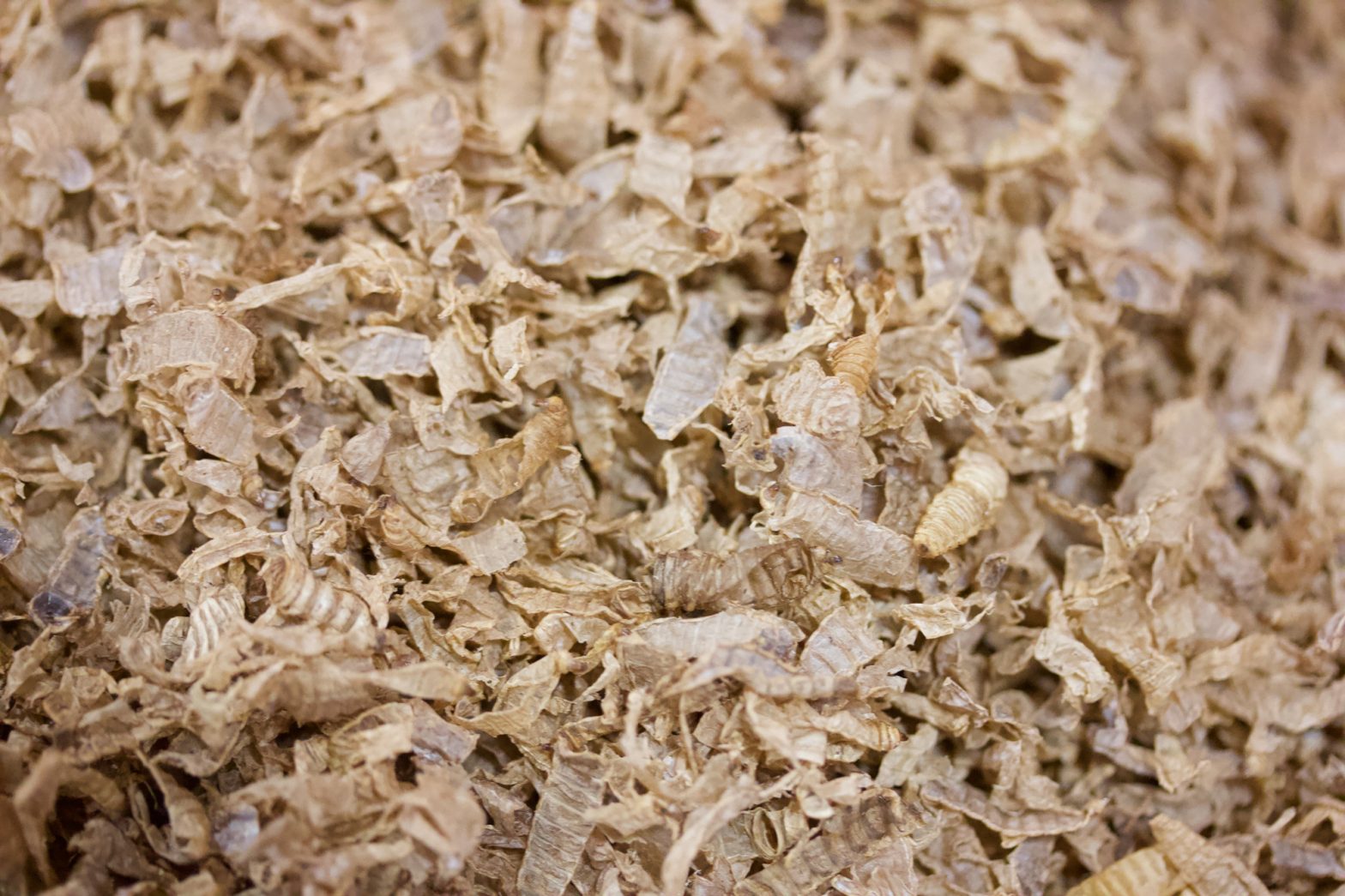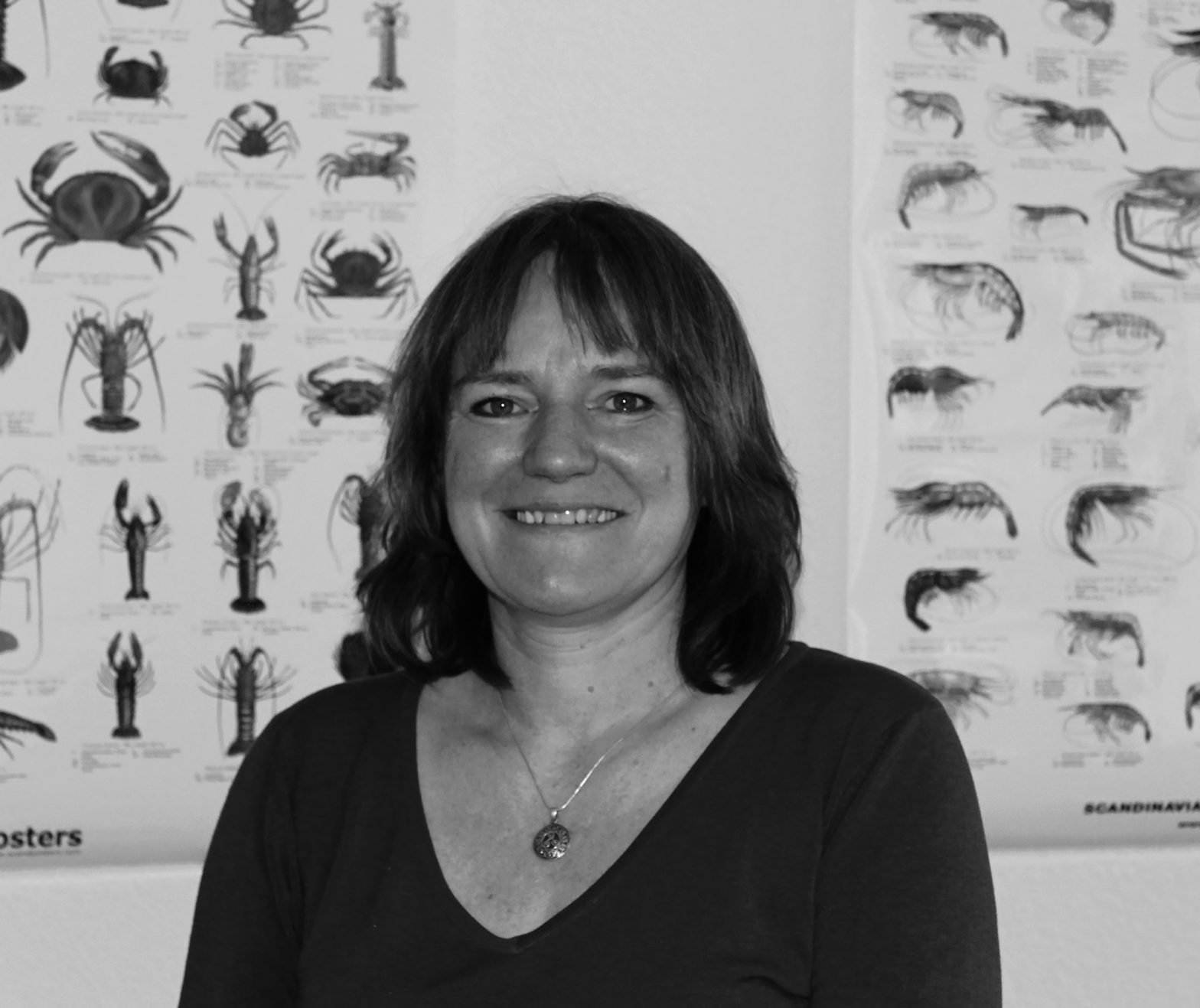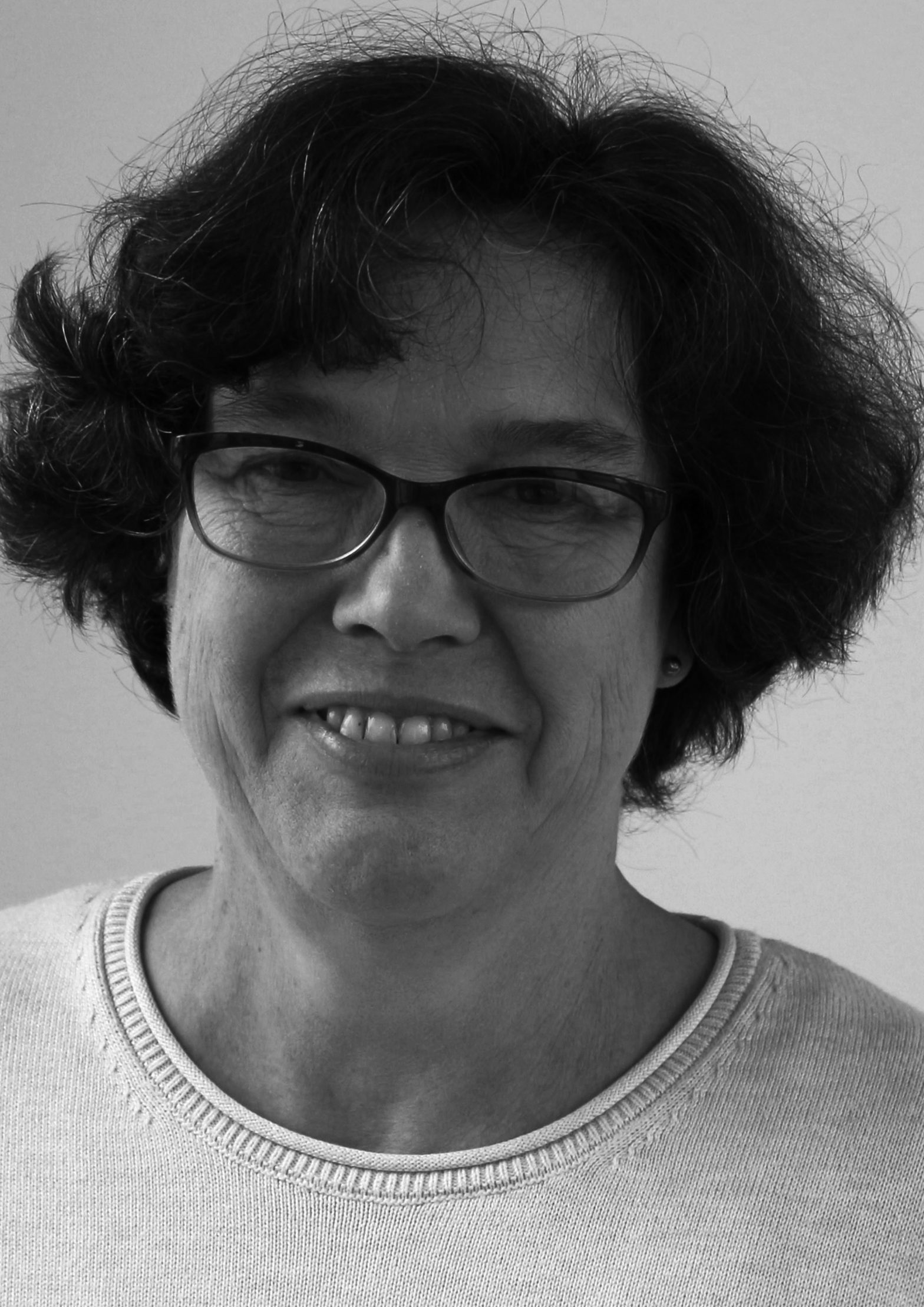BACTERIAL CELLULOSE profile by Stefanie Putsch, Dean Weigand & Elena Bangel Description of the material: Cellulose is a polymer made from the monomer cellobiose. It is the main component of plant cell membranes and is the most abundant biomolecule. The linkage of the monomers takes place through a condensation reaction in which two hydroxyl groups (-OH) form …
Category Archives: ZZZ process
PROTEIN-BASED BIOPLASTICS profile
PROTEIN-BASED BIOPLASTICS profile by Charlotte Bolinski, Amon Zänker & Sophia Reißenweber Description of the material:Proteins consist of amino acids and are built up and broken down by enzymes. Depending on the protein source, they differ greatly in their composition. Proteases are enzymes that cut up other proteins. Through cross-linking of amino acids by a certain enzyme, …
PHB profile
PHB profile by Hannah Kannenberg & Theresa Voigt Characteristics– white, opaque and quite brittle– thermoplastic– odourless– biocompatible– 175 °C melting point– not resistant to heat above 185 °C for more than 3 minutes– isotactic & linear which results in a thin liquid meltmelt is suitable for fine structures, thin walls and micro parts– 1.3 % shrinkage– …
PA10.10+Flax profile
PA10.10+Flax profile by Fridolin Richter & Sebastian Kommer PA10.10 Brand name: VESTAMID® Terra DSManufacturer: EVONIKRaw material: Castor oilCarbon Footprint: 4.0 kg CO2eq.Processing temp.: 220 – 250 °CDrying temp.: 80 – 100 °C Properties:high mechanical strengthgood UV and chemical resistancehigh light transmissioncan be used at high temperatures Origin: Castor oil is extracted from the seeds of the …
PLA profile
PLA profile by Caterina Plenzick, Anselm Wohlfahrt, Rafael Vinz & Lukas Keller Raw materials – basic building blocks/ starting materialsPLA is a biodegradable, bio-based, thermoplastic polyester. Through the biotechnological fermentation of sugar, lactic acid is produced in bioreactors with the help of bacteria from the Lactobacillus family, which is then polymerised. The starting materials for PLA are …
CHITOSAN profile
CHITOSAN profile by Max Greiner, Lara Herrmann & Sophie Kikowatz Description of the materialChitosan is a substance obtained by deacetylation of chitin (the second most abundant natural biopolymer after cellulose). Natural occurrences of chitin are shellfish, exoskeletons of insects and fungi. The shells or insect carapaces are available in large quantities, e.g. in the production …
INTERVIEW with ANKE WUNDER from BIOLOG HEPPE
INTERVIEW with ANKE WUNDER from BIOLOG HEPPE by Max Greiner, Sophie Kikowatz & Lara Herrmann What are the most important steps of the chitosan production? We use shells that are left over from peeling crabs and prawns. Often there are remains of meat (protein) and calcium carbonate, but the most interesting substance of such shells …
Continue reading “INTERVIEW with ANKE WUNDER from BIOLOG HEPPE”
INTERVIEW with GUNDELA PESCHEL from HKI
INTERVIEW with GUNDELA PESCHEL from HKI by Hannah Kannenberg & Theresa Voigt Where do you see the advantages of PHB over conventional plastic? We do not pollute our environment with toxins at this point, if you do it right. The material is completely biodegradable no matter where. Whether it ends up in the ocean or …
INTERVIEW with KAY KOELZIG from SACHSENLEINEN
INTERVIEW with KAY KOELZIG from SACHSENLEINEN by Fridolin Richter & Sebastian Kommer Where do you see the potential of flax? I see more potential in hemp fibres. Flax grows in a relatively limited way. The biggest growing areas are in France and Belgium, because flax needs a maritime climate to grow well. This means that …
Continue reading “INTERVIEW with KAY KOELZIG from SACHSENLEINEN”
INTERVIEW with BASSE STITTGEN
INTERVIEW with BASSE STITTGEN by Sophia Reißenweber, Amon Zänker & Charlotte Bolinski What are the benefits of protein-based bioplastics? I am generally not an expert for protein-based bioplastics. What interests me about the containing proteins are the resources like egg white, blood, or the different kinds of seeds like hemp seeds with which it is …

